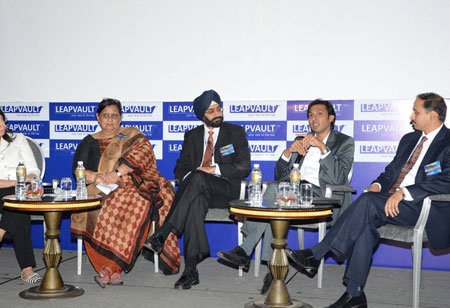A Paradigm Shift in Outlook and Functioning
By Vaibhav Jain, National Head L&D, Bajaj Finserv

Vaibhav Jain, National Head L&D, Bajaj Finserv
Learning and development is one of the key tasks of any HR spectrum. Without an organized learning and development framework, no organization can hope to redefine or fine-tune its talent pool and consequently its existing skillset. Learning and Development consultants bring to the table, the finest and most widely tested best HR practices to ensure that the organization culture transforms into the most conducive umbrella under which change breeds in the organization at every management level. Increasingly though, learning and development practitioners have been inundated with an extremely impossible task to build learning and development initiatives in a time when unpredictability has become the new routine. How can one build upon learning and development in a time when the world is not merely confined to probabilities but newer possibilities, possibilities that will multiply with every technology getting obsolete, every new business market being developed and every new product being launched?
Learning and Development has become a business-critical priority for increasing skills, improving the leadership pipeline, and enhancing employee engagement and retention—one of the biggest challenges as quoted in Deloitte’s Global Human Capital Trends 2015 survey. The survey emphasizes that the importance of Learning and development jumped 25 percent as compared to the previous year. Also, the capability gap enlarged three times as compared to last year. Further, the gradual shift in doing business from old style capitalism to new age transparent collaboration means that talent must be sourced according to the competencies that are relevant and valid in the present scenario. The intricate alignment of an organization’s business strategy with the HR strategy demands the use of Analytics and Big Data for essential survival further highlights the increasingly challenging role Learning and Development consultants must be equipped to play.
The magnitude and complexity of change is getting more humongous and therefore agile and adaptable organizations with an innovative talent pool are the new norm. It is increasingly predicted that in near future, companies will acquire other companies not for market share or distribution channels but purely for talent. In addition, succession planning can be expected to become even more unpredictable since the roles for which internal talent is being developed, may themselves change in the years to come. A survey by another consulting organization suggests that 1/3rd of the competencies that we consider critical today, will no longer be considered critical by 2020. Consequently, Learning and development specialists will have to design such training cohorts which will focus on key elements such as dealing with ambiguity so as to enable to take into account the volatility associated with any business. A diverse workforce adds not only varied experience but also brings to the organization newer perspectives. Matrix structure further offers the flexibility to work in virtual environs, with widespread teams surpassing the constraints of time zones. This and the demographic statistics of the organization will have to be kept in mind while the L&D specialists formulate the training plan of the organization.




